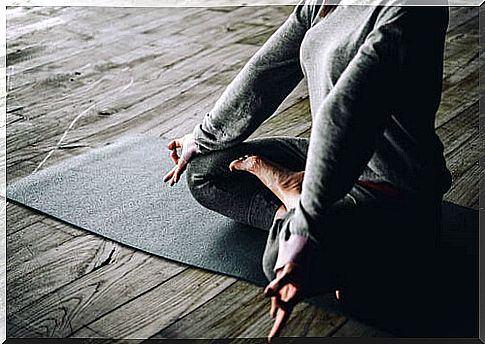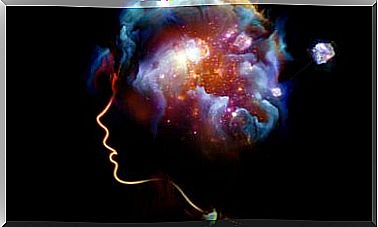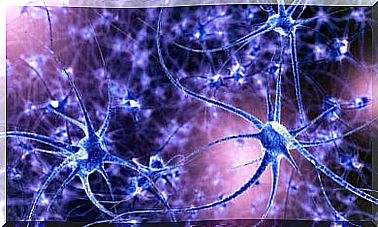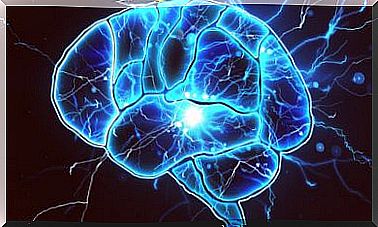Yoga And Depression: What Is Their Relationship?

The relationship between yoga and depression can be difficult to understand. Especially considering that one of the main symptoms of this disorder is apathy for almost all kinds of activities. However, the practice of this discipline offers, to those suffering from depression, multiple benefits.
After the diagnosis of this disorder, a combination of psychological and pharmacological treatment is usually established. However, its high prevalence and comorbidity with other disorders and the possible side effects that some antidepressant drugs can cause, have led to the rise of complementary therapies, such as yoga.
What is depression?
Depression is a mood disorder with predominantly affective symptoms. Likewise, it is characterized by the presence of other alterations at the cognitive and somatic level. It is, therefore, an alteration whose affectation is both psychic and physical, although it especially influences the emotional sphere.

The symptoms of major depression, depending on the plane in which they manifest, can be, among others:
- Affective : anhedonia, irritability, subjective feeling of discomfort, hopelessness, feeling of worthlessness or guilt, decreased interest or pleasure for most activities and recurrent thoughts of death.
- Cognitive : decreased ability to concentrate and make decisions.
- Somatic : weight gain or loss without dieting, insomnia or hypersomnia, psychomotor agitation or retardation, and fatigue or loss of energy.
This disorder can vary according to the intensity, the frequency with which the symptoms appear and their affectation to the social, work or family sphere of the patient. In addition, it can be temporary or permanent and cause partial or total disability.
How does depression chemically affect our brain?
As we can see, a depressed person has a degree of global affectation in his body. It not only manifests itself in low self-esteem or chronic fatigue, but it can even lead to suicide.
On a chemical level, this serious disorder alters many types of neurotransmitters (cells that help neurons in the brain communicate):
- Norepinephrine : it is a hormone that responds to stress, that is, it prepares the body to face a threatening situation. Being constantly in a fighting attitude reduces the immune system, increases the risk of cancer, and conditions such as depression or anxiety appear.
- Dopamine : its deficit is related to apathy, fatigue, mood swings, chronic boredom. It also reduces the feeling of reward and pleasure.
- Serotonin : its decrease can precipitate depression. It causes discouragement, loss of appetite and sleep, changes in body temperature and social behavior.
What does yoga contribute?
Now that we know how depression works, we will better appreciate the benefits of yoga in relation to this disorder. Its practice is much more than a mere physical exercise, since it also involves the mental and spiritual state. In fact, it comes from the term ” yuj ” which in Sanskrit means yoke or union: harmony between body, mind and spirit. Do you already sense the relationship between yoga and depression?
Practicing yoga helps us to know ourselves better, both mentally and physically. It allows us to explore corners of the deepest part of our being. All this by learning postures (asanas), breaths and mantras (sounds and words).

People are multidimensional. We are not merely symptoms or thoughts, but the fruit of their interaction. This discipline teaches us to harmonize our ideas, behaviors, moods, memory and body systems. Thus, we can live in peace the moment these dimensions connect with each other. So this organic balance is the point of union between yoga and depression.
Yoga and depression: its benefits
At a chemical level, this practice originally from India stimulates the production of proteins, which are the substances in charge of repairing neurons. This increases neuroplasticity, that is, the ability of our brain to form and modify neural connections according to the experiences we live and learning.
Additionally, doing yoga regulates serotonin and dopamine levels, increases brain blood flow, and releases endorphins. All this contributes to the improvement of the mood in a natural way.
The different asanas strengthen our locomotor system. They increase the flexibility of the muscles and make them stronger, as well as the ligaments, tendons and fasciae.
Practicing yoga improves affective symptoms
As we have said, the predominant symptoms in this disorder are affective. The good news is that yoga can act directly on them. It reduces its intensity and, with it, provides immediate effects.
- It favors a state of relaxation and tranquility: the performance of certain asanas transfers a pleasant and well-being sensation to the body. It stimulates different parts of it and helps to improve the mood.
- Combat stress and anxiety : the slow and deep breathing of these exercises helps to achieve mental and emotional peace. Meditation and concentration on the different parts of the body can reduce stress and anxiety levels. This, in turn, calms inflammation and strengthens the immune system.
- Facilitates the connection with the interior: yoga allows us to change negative thoughts for more positive ones and also to be able to control the most difficult and complex emotions. In this way, irritability decreases, as does the feeling of hopelessness and apathy.

These are some of the reasons why yoga has become a truly comprehensive practice against depression and other disorders. Thus, yoga and depression are related. Although, as we have seen, there are many benefits, it is advisable to be cautious and not attribute only to yoga the improvement or cure of depression. Since this discipline cannot replace pharmacological or psychological treatments. Yoga works as an adjunct to both.









